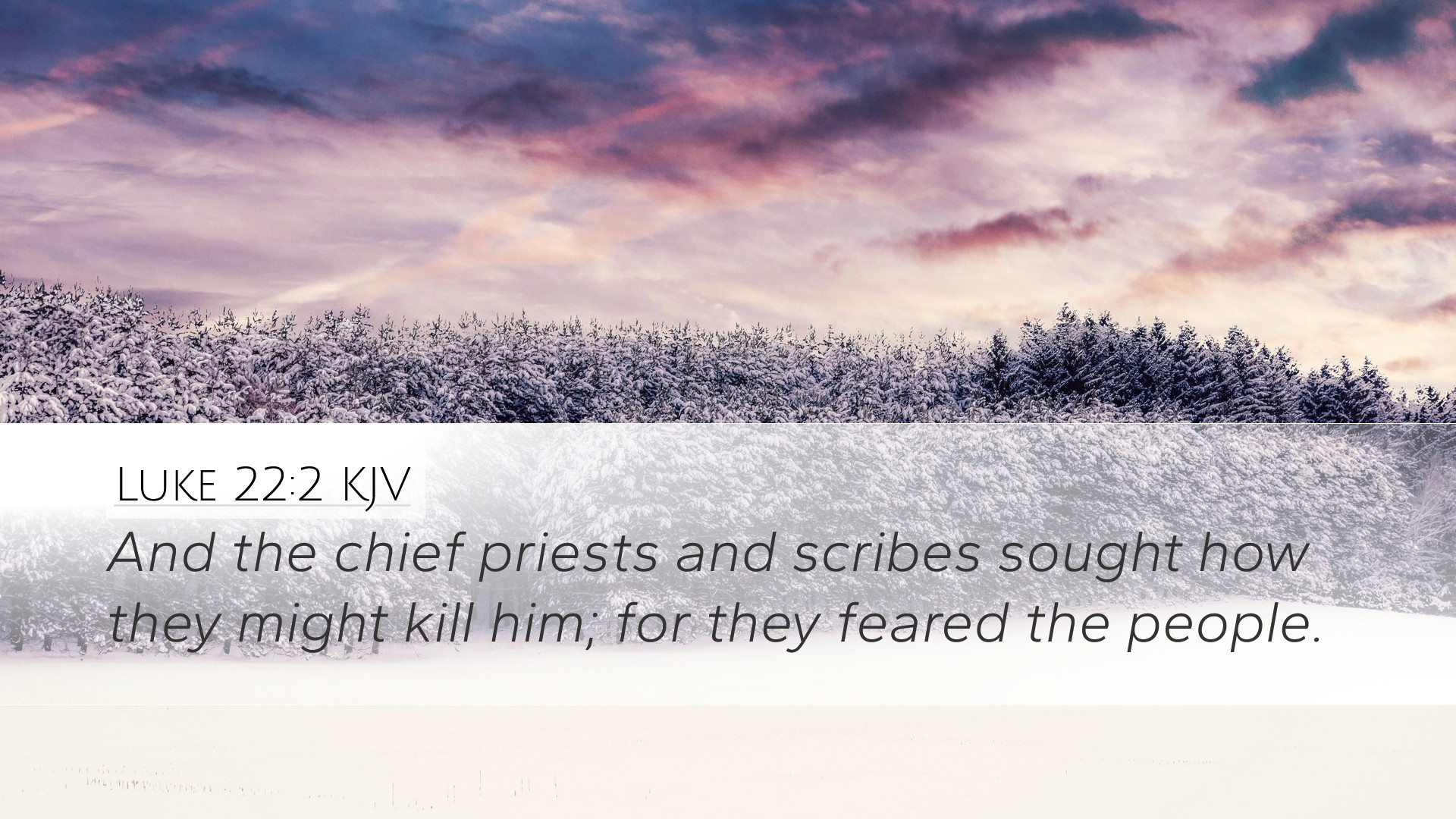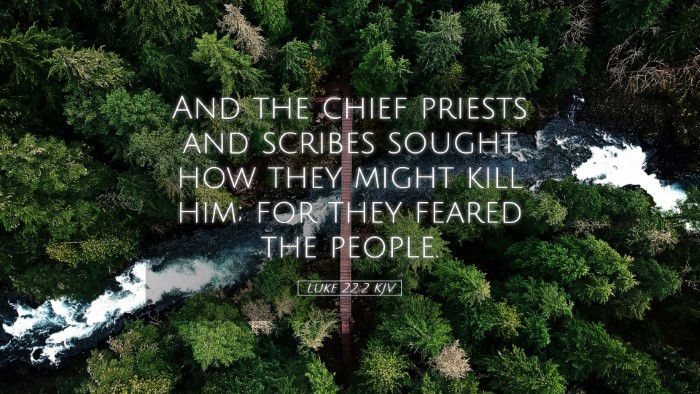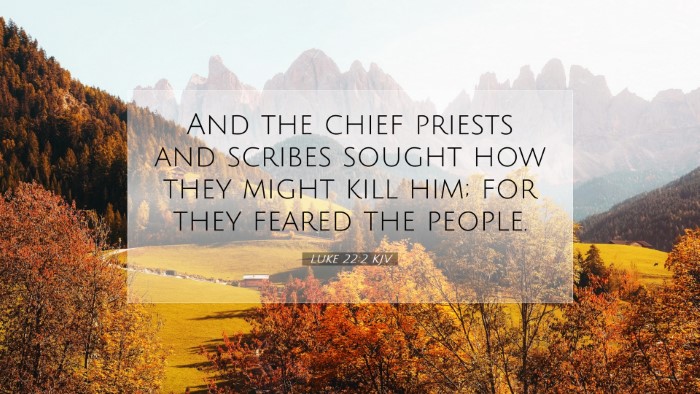Commentary on Luke 22:2
Verse Context: Luke 22:2 states, “And the chief priests and scribes sought how they might kill him; for they feared the people.” This verse sets the stage for the events leading up to the crucifixion of Jesus Christ, highlighting the tension between the religious authorities and Christ's growing influence among the people.
General Overview
This verse introduces one of the pivotal moments in the New Testament narrative. The intent of the chief priests and scribes to eliminate Jesus reflects the profound conflict between Jesus’ ministry and the established religious order. The actions and motivations of these leaders provide critical insights into the socio-political landscape of first-century Judea.
Insights from Matthew Henry
Matthew Henry interprets this passage as a demonstration of the persistent animosity that exists between the religious leaders and Jesus. He notes:
- Malice and Envy: Henry emphasizes that the chief priests and scribes were motivated by malice fueled by envy. They feared losing their influence and authority over the people as Jesus' popularity soared.
- The Fear of the People: The fear that drove these leaders stemmed from the possibility of public unrest. They were acutely aware that any attempt to harm Jesus could lead to a backlash among the populace.
- Predetermined Plot: Henry suggests that the plotting against Jesus was not merely an impulsive reaction but was, in some sense, premeditated. Their planning reflects the seriousness of their intent.
Insights from Albert Barnes
Albert Barnes offers a thorough analysis of the motivations behind the actions of the religious elite:
- Political Motivations: Barnes argues that political motivations played a significant role in their desire to kill Jesus. The Jewish leaders recognized Jesus as a threat not only to their theological system but also to their political power, as any disturbance could attract the attention of the Roman authorities.
- Crisis of Authority: The power struggle is palpable. With Jesus teaching with authority and performing miracles, the established order felt threatened. Barnes highlights this crisis as central to understanding the opposition Jesus faced.
- Implications of Fear: Barnes elaborates on the implications of the fear expressed by the religious leaders. He notes that fear often catalyzes rash and violent decisions, leading individuals to act against their better judgment.
Insights from Adam Clarke
Adam Clarke provides a detailed theological and historical perspective:
- Historical Context: Clarke examines the historical context of the verse, noting the existing tensions between the Jewish authorities and Roman governance. This tension adds complexity to the motivations of the scribes and priests as they plotted against Jesus.
- Theological Foreshadowing: Clarke suggests that this verse serves as a foreshadowing of the coming crucifixion. It marks a turning point where the plot against Jesus gains momentum, leading to fulfillment of prophetic scriptures regarding the Messiah's suffering.
- Character of Jesus: Notably, Clarke reflects on the character of Jesus in light of these conspiracies. His steadfastness in the face of imminent danger exemplifies his divine mission and purpose.
Pastoral Reflections
This verse invites pastors and theologians to reflect on the nature of conflict in ministry:
- Opposition in Ministry: Just as Jesus faced opposition, pastors are reminded that they too may encounter hostility when challenging the status quo. Addressing uncomfortable truths may provoke fear and hostility.
- Fear vs. Faith: The contrast between the fear of the religious leaders and the faith of Christ challenges modern believers to examine their own responses to fear. It encourages trust in God’s sovereignty amid challenges.
- Lessons on Authority: The dynamics of power, fear, and authority remain relevant today. This verse serves as a reminder for church leaders about the pitfalls of requiring control over God’s work.
Theological Implications
Exploring the theological implications of this passage reveals significant themes:
- The Sovereignty of God: The plotting by the chief priests and scribes underscores God’s ultimate control over the events leading to redemption. Despite human schemes, God's plan prevails.
- Moral Responsibility: This verse raises questions about moral responsibility in the context of spiritual leadership. The actions of the religious leaders serve as a cautionary tale about the consequences of unchecked ambition and fear.
- Jesus’ Mission: Recognizing the plots against Him frames Jesus' mission within the narrative of sacrifice and redemption. It offers a profound insight into the love of Christ, who willingly faced death for humanity.
Conclusion
Luke 22:2 serves as a vital verse that foreshadows the coming events leading up to the crucifixion of Jesus. By examining the motivations of the chief priests and scribes through the lenses of various esteemed commentaries, we see the depth of conflict and significance of Jesus' mission. For pastors, students, and theologians, this passage opens dialogue about the nature of fear, authority, and the unfailing sovereignty of God in the face of human opposition.


